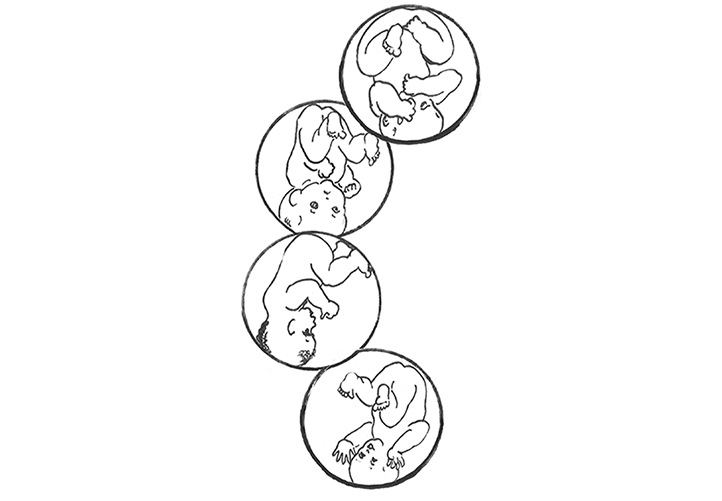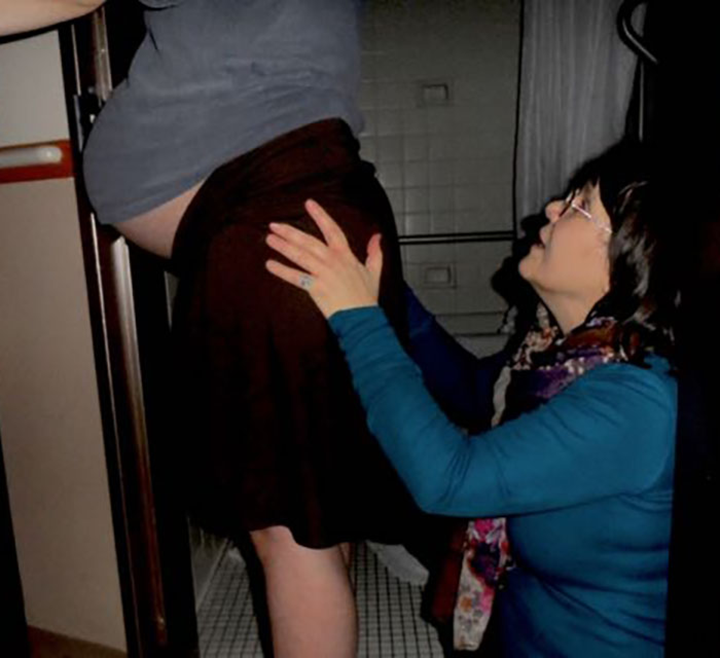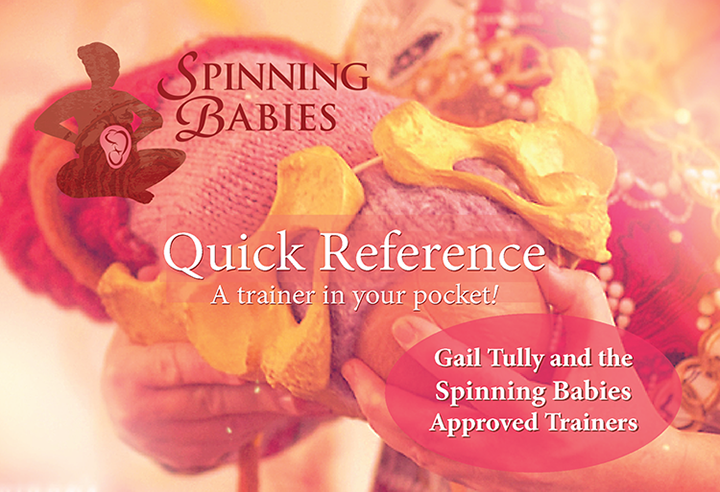
Manual rotation of the posterior baby’s head to the anterior position is an option before resorting to cesarean to finish a stalled labor. This technique is proven to reduce cesarean. Midwife researcher and speaker, Catherine Os learned about Spinning Babies® from Approved Trainer Jennifer Walker, at the Gynzone conference in Europe. Catherine Os says:
“At my workshops I am very clear that manual rotation is a tool to consider during second stage of labor. The head needs to be well engaged and then it is beneficial to use it before failure to progress. This indicates that the woman has already been in labor for a long time and Spinning Babies® is one of the most important tools to help malpositions resolve in the first stage. But I also use Spinning Babies after manual rotation in second stage, because my aim with manual rotation is not necessarily for the baby to be born directly, but to aid progress.” – Midwife Cathrine Os
Spinning Babies® offers a protocol for the persistently posterior presentation of the baby. Let’s begin with a specific use of our three Principles of Balance, Gravity, and Movement.
1. Balancing “makes room” for baby and also, if necessary, easier manual rotation. We would substitute Shaking the Apples or Bum Jiggling instead of similar techniques that “speak” to the sensors in muscle and fascia to lengthen muscles for “letting go” in the area as well as activating the parasympathetic nervous system for calming.

2. Gravity in backing baby up (not to be confused with the other purpose of mobilizing the fascia and lengthening the cervical ligaments by the same inverted position). We have birth positions for each of the three levels of the pelvis on our Quick Reference Guide to make the most room where ever baby is located in (or above) the pelvis.

Sitting on a birth stool is a great idea when the angle of the birth giver’s thighs are appropriate to the level where baby is. Sometimes we need to keep the inlet open throughout the descent of the baby, even when we see the posterior baby at the outlet! That’s a little different than the usual case where we can let the inlet close in positions that open the outlet. Having the spine straight or arched can give room for a tall or posterior baby at both inlet and outlet (to a degree) and movement helps rock the pelvis for descent.
3. Movement can be a kneeling lunge is another way of moving with gravity (if not leaning forward at the same time for an OP baby). Jiggling in this gentle way (like a vibration) is ideal for relaxation needed to make room for the baby. Remember that a mobile pelvis is a must for vaginal birth!
Midwife Cathrine Os currently works at the Women and Children’s Division, Oslo University Hospital. Cathrine does research in International and Humanitarian Medicine, Medical Science Nursing and Obstetrics. Their current project is ‘How Can Manual Rotation Reduce Vacuum, Forceps and Caesarean Deliveries?- A review of the evidence.’
The purpose is to investigate whether manual rotation can be used to reduce vakuum, forceps and caesarean deliveries in women with occiput posterior or occiput transverse positions from 7 cm dilation in labour. See more about her research paper here!
[tribe_events_list limit=”4″]